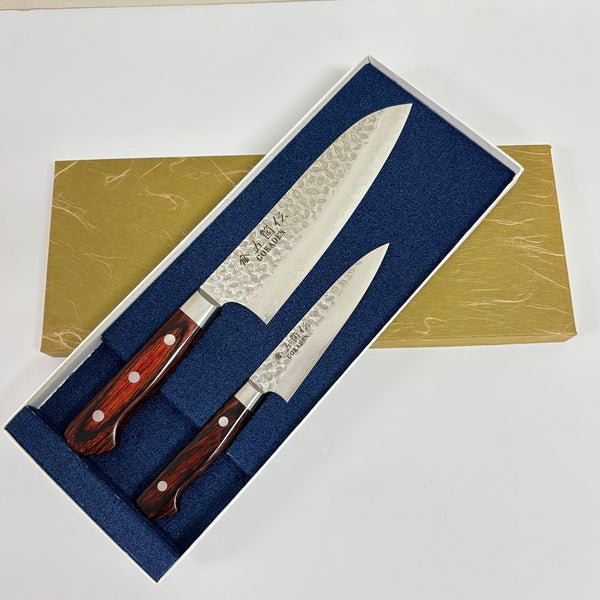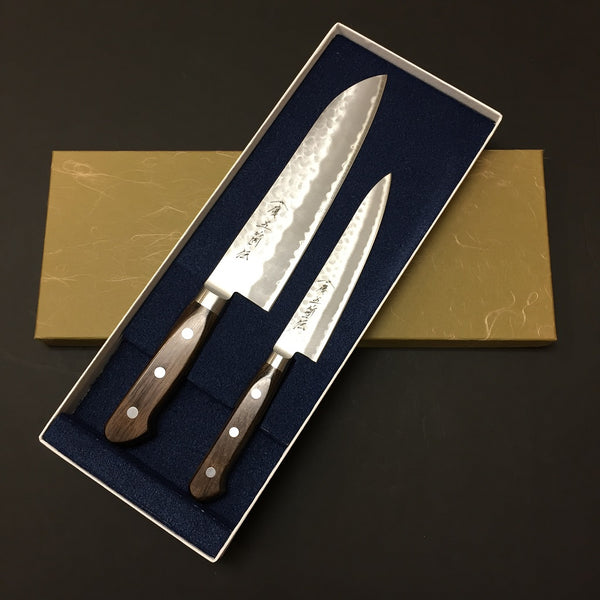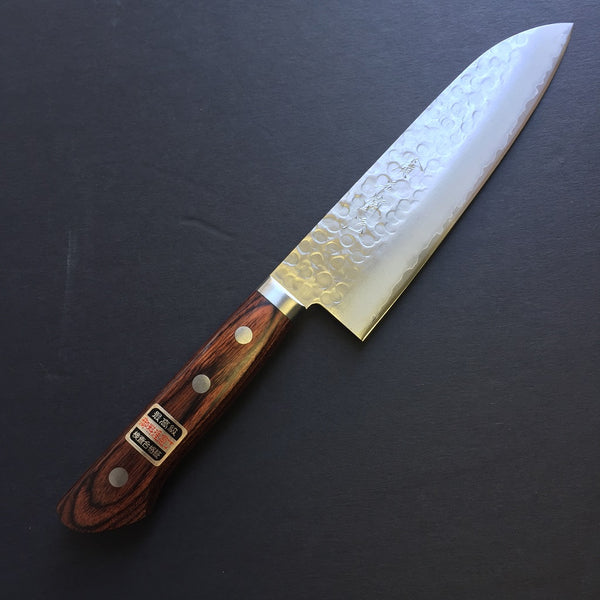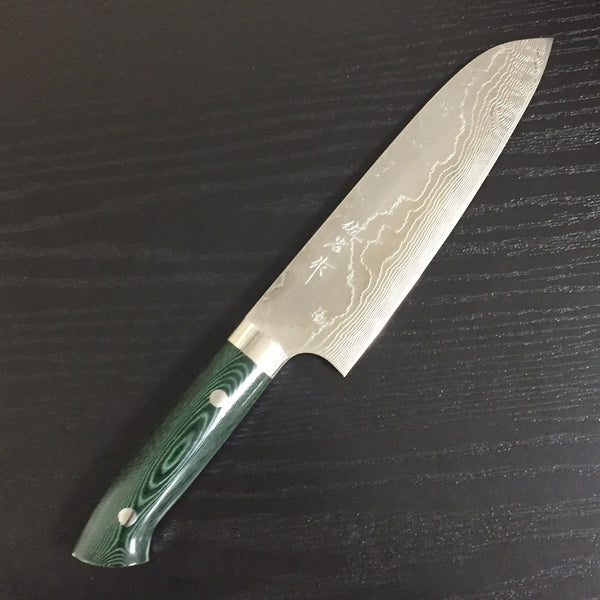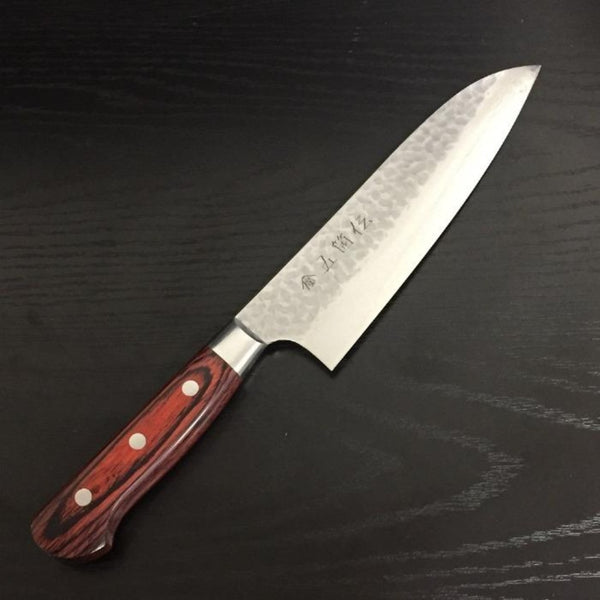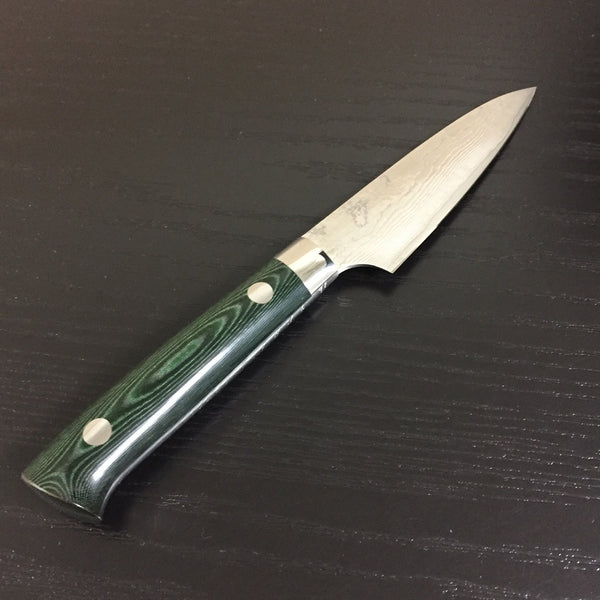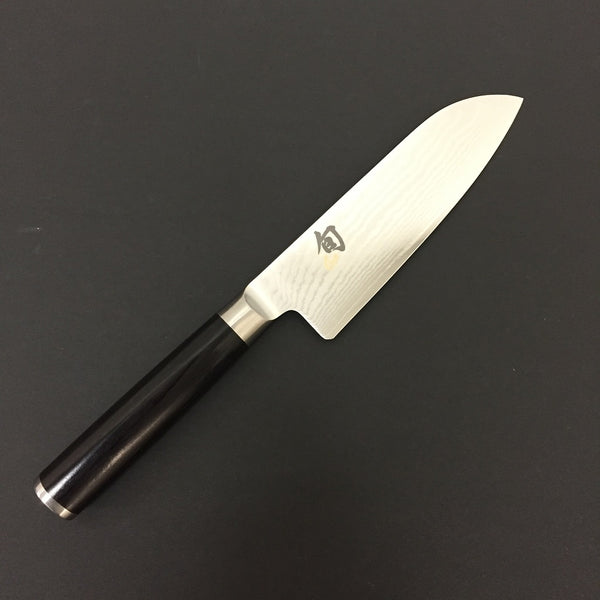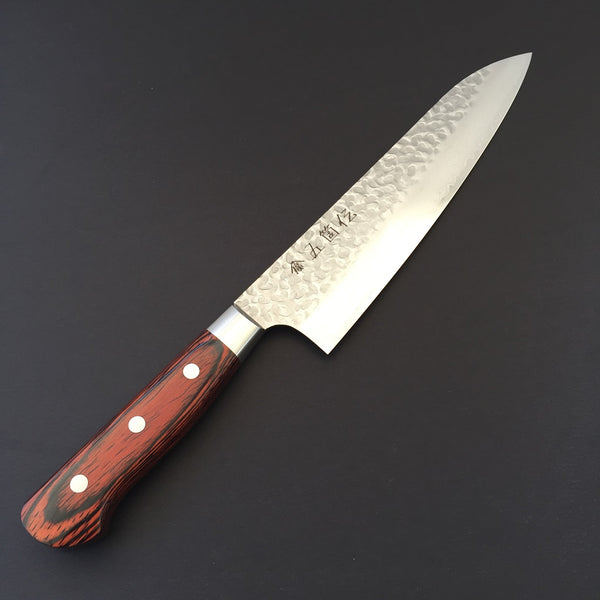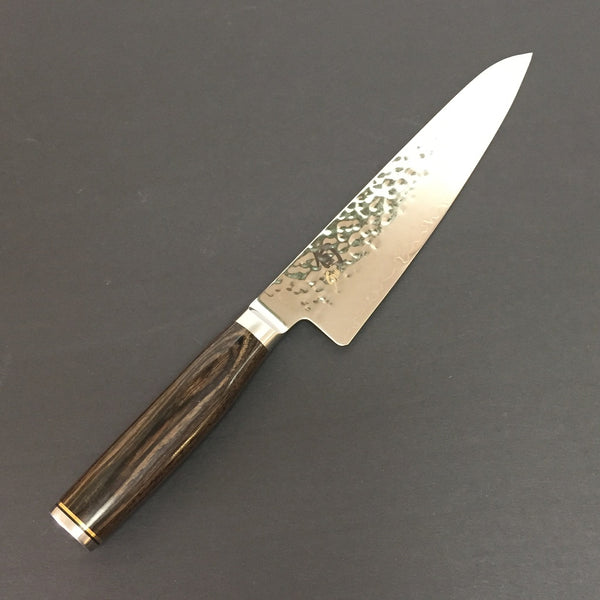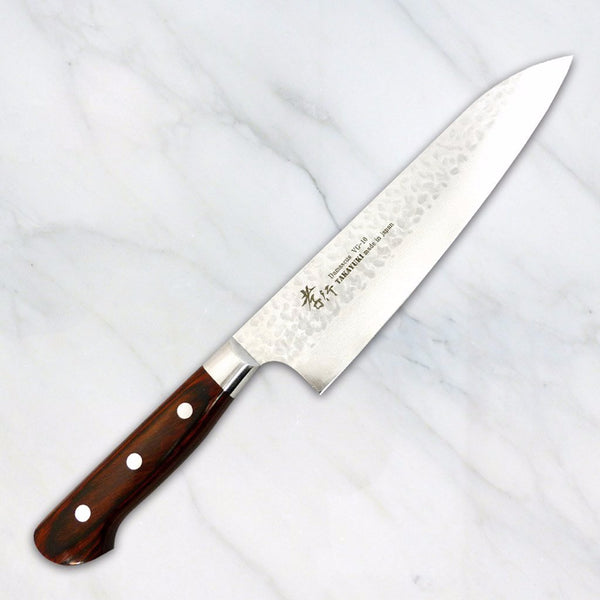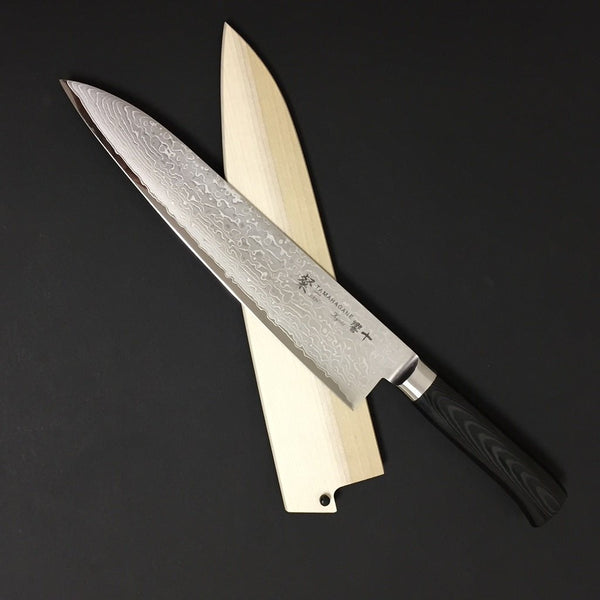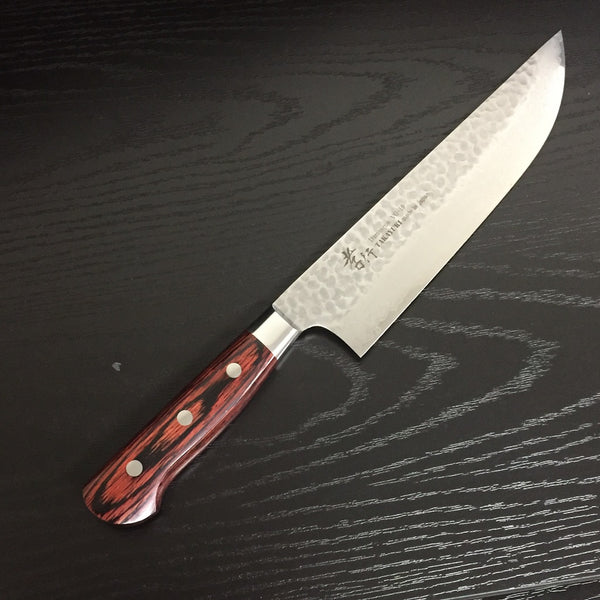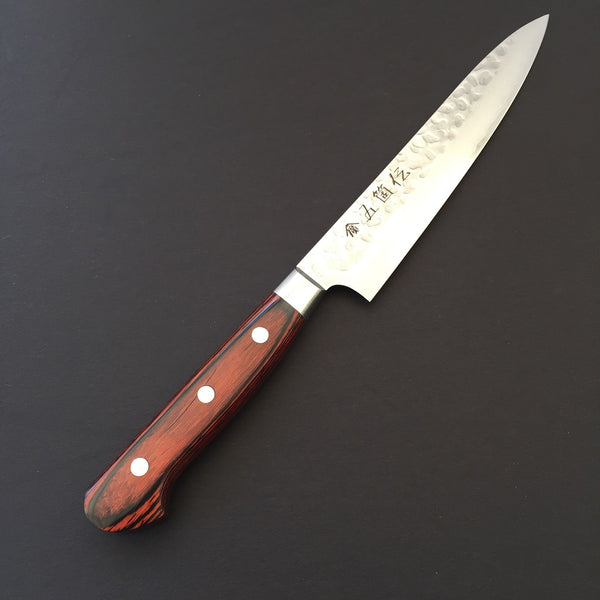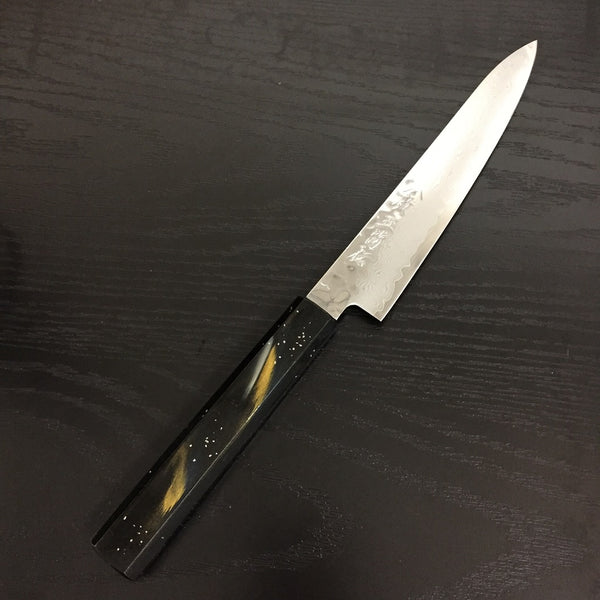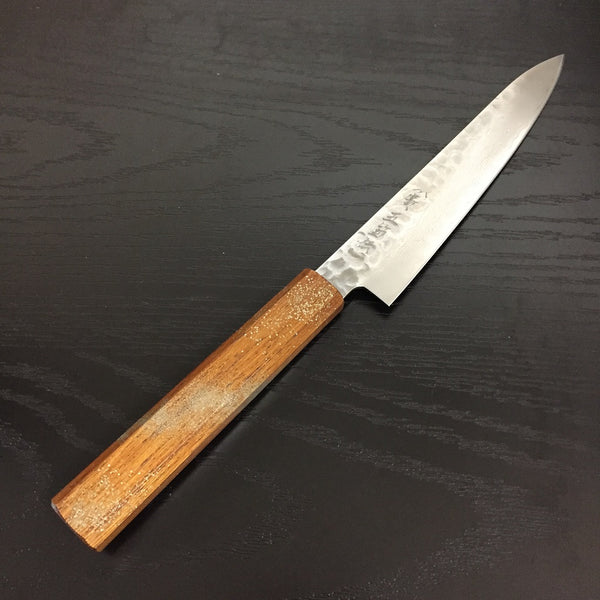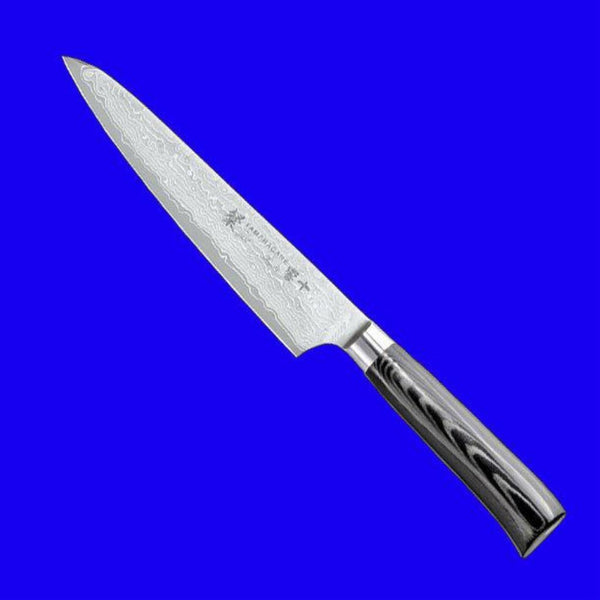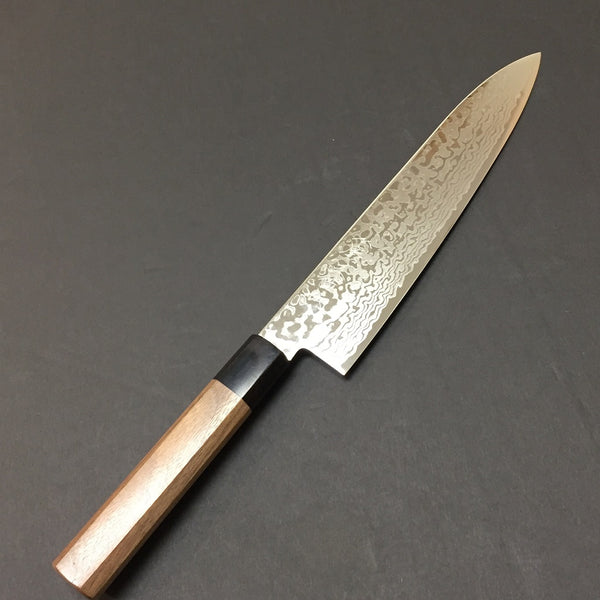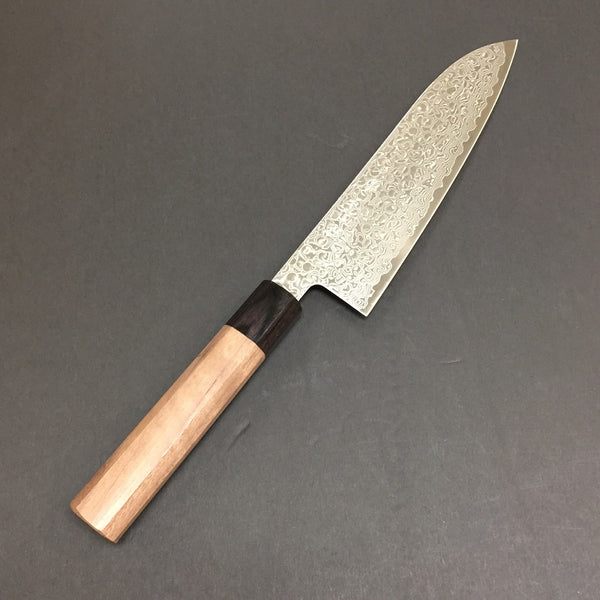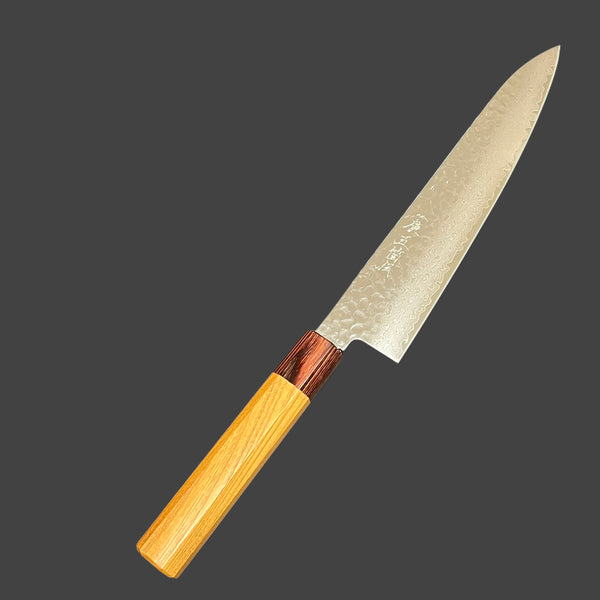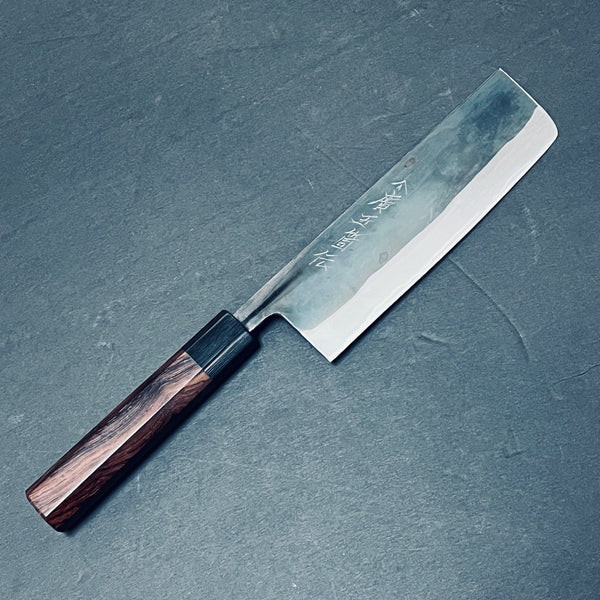Damascus
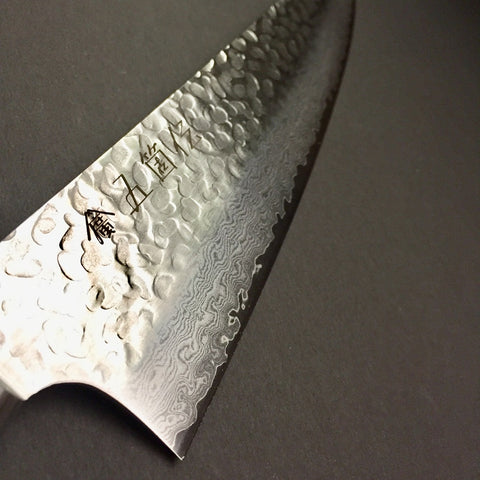
Damascus knives are the technique used to make the steel that marks them as 'Damascus' rather than any other part of the knife design. Damascus knives can be identified by the wavy, mottled pattern than runs through the blade.
Original Damascus steel
Damascus steel was the forged steel of the blades of swords smith in the Near
East from ingot of Wootz steel imported from Southern India and Sri Lanka.
These swords are characterized by distinctive patterns of banding and mottling reminiscent of flowing water, or in a "ladder" or "teardrop" pattern. Such blades were reputed to be tough, resistant to shattering, and capable of being honed to a sharp, resilient edge.
Unfortunately, the making of traditional damascus steel is a lost art entirely.
How is modern Damascus steel made?
Cast Damascus steel, known as wootz, was popular in the East. It's produced by melting pieces of iron and steel with charcoal in a reducing atmosphere (lacking oxygen). During the process, the metals absorb carbon from the charcoal and the resulting alloy is cooled at a very slow rate.
Pattern welded steel is commonly sold today as "Damascus steel", though it appears that the original Damascus steel was not created with that technique. Pattern weld Damascus is made out of several types of steel and iron slices, which are then welded together to form a billet. The patterns vary depending on what the smith does to the billet. The billet is drawn out and folded until the desired number of layers are formed. The end result, if done well, bears a strong resemblance to the surface appearance of a true Damascus blade, though the internal structure is completely dissimilar.



